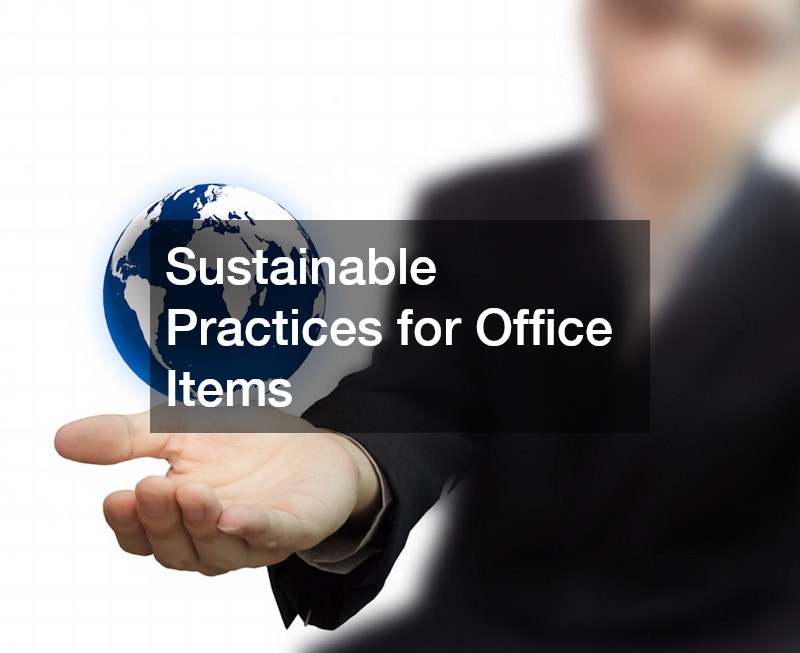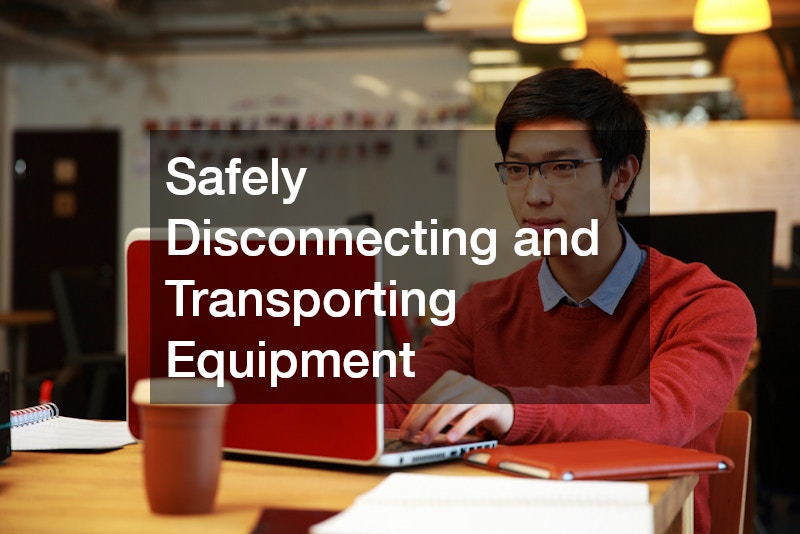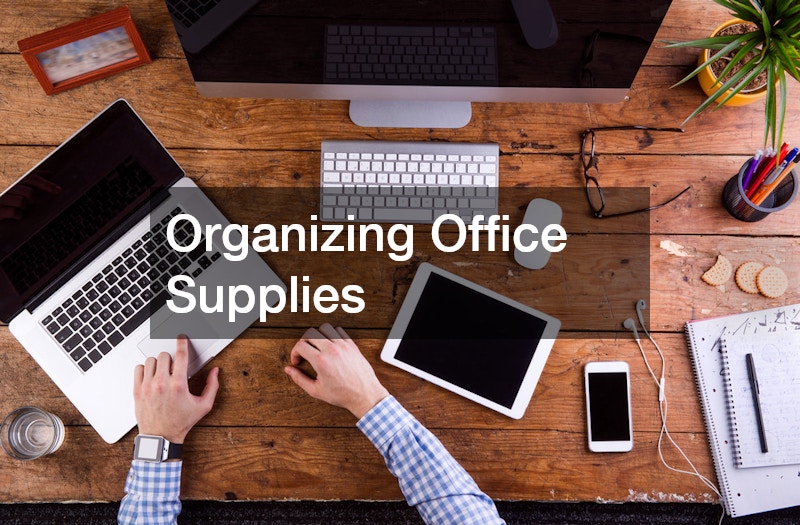Wondering how to prepare for an office relocation? It can be a daunting task, but with proper planning, it doesn’t have to be overwhelming. From decluttering and recycling to organizing and remodeling, taking the right steps ensures a smooth transition. This guide will walk you through nine key strategies for a successful office move.

1. Assessing Your Office Needs: How to Evaluate Space Requirements
Before diving into the physical aspects of your office relocation, it’s crucial to evaluate the space requirements for your new location. When learning how to prepare for an office relocation, start by assessing the number of employees and the type of work they do. How much space will each person need to work comfortably and efficiently? Consider factors such as desk size, meeting room requirements, storage areas, and common spaces.
Ask yourself whether the new office layout will promote collaboration or hinder it. For example, if your team thrives in an open-plan environment, you’ll want to ensure your new office accommodates that. Alternatively, if privacy is essential for focused work, you’ll need private offices or even soundproof commercial doors.
Additionally, factor in future growth. Will your company expand in the next few years? Leave room for scalability to avoid another move in the near future. You should also evaluate proximity to amenities such as parking, public transport, and dining options, which can contribute to employee satisfaction. Once you’ve outlined these requirements, make sure the space you’re considering meets your needs both now and in the long term.
2. Decluttering: A Step-by-Step Guide to Clearing Out Unwanted Items
Decluttering is one of the most important steps when learning how to prepare for an office relocation. A clutter-free office not only makes the move smoother but also enhances the overall productivity and morale of your team. Begin by conducting an office-wide audit of all equipment, furniture, and paperwork. Start with the least used areas—like storage rooms—and make your way through the more frequently used spaces.
For furniture, determine what’s essential to your operation. If some pieces are outdated or no longer serve a purpose, it may be time to replace or donate them. Similarly, look at your technology—old computers, printers, or other devices that are no longer efficient can be recycled or donated. Be sure to wipe any old hard drives before discarding electronics to ensure sensitive data is securely erased.
Paperwork often accumulates in offices, so it’s essential to go through files and decide which are worth keeping and which can be shredded. Take advantage of paper shredding services as well as digital filing systems to reduce physical storage needs. As you work through the decluttering process, involve your team members in sorting through their personal items, as they can offer valuable input on what’s essential and what’s not.

3. Recycling and Donating: Sustainable Practices for Office Items
When preparing for an office relocation, incorporating sustainable practices like recycling and donating is not only good for the environment but also helps reduce waste. Instead of throwing away unwanted office equipment, furniture, or supplies, consider recycling or donating them.
Start by identifying items that can be recycled, such as paper, cardboard, and plastic. Many local recycling centers or waste management companies offer specialized services for businesses, helping you properly dispose of these materials. Be sure to also look into recycling equipment while you survey your electronics, as many devices such as computers, phones, and printers can be recycled in an environmentally responsible way.
For office furniture and equipment that are still in good condition, donating them to charities or non-profit organizations is an excellent option. Organizations like Goodwill or Habitat for Humanity often accept gently used furniture and equipment. Not only does this reduce landfill waste, but it can also help others who need it.
You can also donate office supplies like pens, staplers, and files to local schools, non-profits, or community centers. If you’re wondering how to prepare for an office relocation sustainably, give back and make a positive impact!
4. Packing Smart: How to Organize and Label Your Office Belongings
Packing up your office efficiently is key to making the relocation process as smooth as possible. The first step is to gather appropriate packing materials. Invest in sturdy boxes, packing tape, and bubble wrap, as well as protective covers for fragile items like electronics and artwork.
Start early and break the packing process into manageable tasks. Begin with non-essential items—things you don’t need to use in the weeks leading up to the move. Label boxes according to the department, type of contents, or room they belong to in the new office. This way, when it’s time to unpack, you’ll know exactly where everything goes.
When packing electronics, make sure to properly disconnect, wrap, and label each item. Keep track of cables and chargers by bundling them together in labeled bags. This will save time when setting up your tech in the new office.
For furniture, disassemble large items whenever possible. This will reduce the risk of damage and make them easier to transport. Finally, create a master inventory list of all your office items. This list will help ensure that nothing is lost or forgotten during the move and serve as a reference point when unpacking.

5. IT and Technology: Safely Disconnecting and Transporting Equipment
Your office’s IT equipment is one of the most important aspects when understanding how to prepare for an office relocation. Properly disconnecting and transporting technology can prevent costly damage and downtime. Begin by identifying the most crucial equipment, such as computers, phones, printers, and servers, and prioritize packing them early in the process.
Before disconnecting any devices, ensure all data is backed up and that any sensitive information is securely stored or wiped. Use encrypted cloud services or external hard drives to back up critical files. If your office uses a server, it’s best to hire an IT professional to safely disassemble, back up, and prepare the server for transport.
When disconnecting computers and monitors, carefully label each wire and connection to make reinstallation easier at the new location. Keep track of which cables belong to which devices to avoid confusion later. Use padded or bubble-wrapped boxes for transportation to prevent equipment from being damaged during the move.
Once everything is packed and transported, make sure to set up your technology in an organized manner in the new office. Test everything to ensure that all devices are functioning properly before you resume work. This will reduce delays and ensure a seamless transition. You may need to invest in commercial generators to ensure your equipment stays online, too.
6. Designing Your New Office Layout: Tips for Maximizing Efficiency
When understanding how to prepare for an office relocation, designing a functional layout that maximizes efficiency is essential. The new office should not only be aesthetically pleasing but also conducive to productivity. Begin by considering the types of workspaces your employees need. For example, if your team collaborates frequently, open spaces or communal areas might be beneficial. Conversely, if employees need privacy for focused work, include private offices or soundproof rooms.
Start by mapping out the available space, keeping in mind the flow of movement between departments, conference rooms, and common areas. Ensure that high-traffic areas, like bathrooms, kitchenettes, and break rooms, are easily accessible to all employees.
Consider ergonomic factors when designing workstations. Adjustable desks, comfortable chairs, proper lighting, and even proper HVAC setting with the help of commercial AC companies can make a significant difference in employee well-being. For communal areas like meeting rooms or lounges, choose furniture that promotes collaboration and easy communication.
Don’t forget about storage space. Incorporate ample storage solutions to keep the office clutter-free and organized. Using vertical storage, such as shelving and cabinets, can help you make the most of limited floor space. Additionally, ensure that electrical outlets and internet connections are conveniently located to accommodate all workstations and technology.
Be sure to hire a local sign shop to ensure clients know where your new office is located, too!

7. Hiring Professional Movers: When to Call in the Experts
Wondering how to prepare for an office relocation and make it as smooth as possible? Ask your local payroll service to ensure you have the budget to hire professional movers! They specialize in efficiently and safely handling large office equipment, heavy furniture, and fragile items. They also bring the necessary tools, such as dollies and padded moving blankets, to protect your property during the move.
One of the main reasons to hire professional movers is to minimize downtime. Office moves often come with a tight timeline, and professional movers can help ensure that your team is back to work quickly. They can handle all aspects of the move, including packing, loading, transporting, and unloading, so you can focus on preparing your office space and setting up your team.
Additionally, professional movers are experienced in dealing with logistics, such as navigating through building corridors, stairs, and elevators. They are also insured, which means that if anything gets damaged during the move, you’re covered.
Make sure to do some research when hiring movers. Look for companies that specialize in office relocations and check reviews for reliability and professionalism. Scheduling an on-site consultation can also help you get an accurate estimate and ensure they understand the scope of the move.
8. Remodeling Your New Office: Creating a Functional and Inspiring Space
Once you’ve moved into your new office and hired an office cleaning company, it’s time to focus on remodeling to create a space that’s both functional and inspiring for your team. The design should align with your company culture while promoting productivity and creativity.
Start by determining which aspects of the office need renovation. Whether it’s repainting walls, upgrading flooring, installing better lighting, or hiring a plumbing company for new fixture installation, these changes can significantly improve the overall atmosphere. Choose colors and materials that inspire energy and creativity, such as vibrant hues or natural elements like wood and plants.
For a more functional approach, ensure that your office has adequate storage solutions to keep the space organized. During commercial remodeling, consider built-in shelving, cabinets, and storage rooms to minimize clutter and maximize work efficiency. Additionally, invest in quality furniture that promotes comfort and productivity, such as ergonomic chairs and sit-stand desks.
If your company values collaboration when learning how to prepare for an office relocation, create spaces where employees can work together. Open meeting rooms, lounge areas, or even outdoor workspaces can facilitate teamwork and communication. Don’t forget to focus on technology—install fast internet connections and ensure that electrical outlets and tech hubs are readily available.

9. Organizing Office Supplies: How to Set Up for Seamless Operations
Efficient organization of office supplies is key to maintaining smooth operations in your new office space. Begin by inventorying all the supplies you have—pens, paper, folders, cleaning supplies, etc.—and decide which items you actually need. Throw out outdated materials or anything that’s no longer useful.
As you’re understanding how to prepare for an office relocation, create an easy-to-navigate storage system. Use clearly labeled bins, drawers, and cabinets to categorize supplies. Keep high-demand items, like printer paper and pens, easily accessible to staff, while bulkier or less frequently used items can be stored in more remote spaces.
Invest in organizational tools such as drawer organizers, filing cabinets, and shelving units to keep everything in its place. Digital systems can also help you manage supplies by tracking what’s running low and when to reorder.
For departments that require specialized supplies, like marketing or finance, create dedicated supply areas to keep their materials separate and organized. This will reduce clutter in shared spaces and help employees find what they need quickly. An organized office not only improves efficiency but also reduces stress, allowing your team to focus on the tasks at hand.
If you’re wondering how to prepare for an office relocation, utilize these tips for careful planning and organization. By addressing everything from decluttering to creating an efficient layout, you’ll set up a productive environment for your team. Embrace the process, and soon enough, your new office will feel like home, fostering creativity and improving overall operational efficiency.


